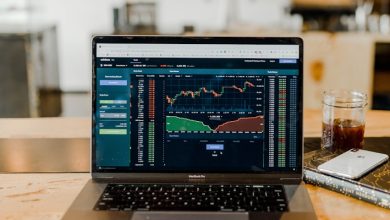How to Protect Your Crypto Assets from Malware

- Understanding the Risks of Malware in the Cryptocurrency Space
- Common Ways Malware Can Target Your Crypto Assets
- Best Practices for Securing Your Cryptocurrency Wallets
- Detecting and Removing Malware from Your Devices
- Importance of Regularly Updating Your Antivirus Software
- Protecting Your Crypto Assets Through Secure Online Behavior
Understanding the Risks of Malware in the Cryptocurrency Space
Malware poses a significant threat to cryptocurrency holders, as it can lead to the loss of funds and sensitive information. Malicious software can infect computers and mobile devices through various means, such as phishing emails, malicious websites, and infected downloads. Once a device is compromised, hackers can gain access to cryptocurrency wallets and steal funds without the owner’s knowledge.
It is essential for cryptocurrency users to understand the risks associated with malware and take proactive measures to protect their assets. One of the most effective ways to safeguard against malware is to use reputable antivirus software and keep it updated regularly. Additionally, users should avoid clicking on suspicious links or downloading files from unknown sources.
Another important step in protecting against malware is to secure cryptocurrency wallets with strong passwords and two-factor authentication. This adds an extra layer of security that can help prevent unauthorized access to funds. It is also crucial to regularly back up wallet information and store it in a secure location to minimize the risk of losing access to funds in the event of a malware attack.
In conclusion, being aware of the risks of malware in the cryptocurrency space is essential for protecting your assets. By taking proactive measures such as using antivirus software, securing wallets with strong passwords, and backing up wallet information, cryptocurrency users can reduce the likelihood of falling victim to malicious attacks. It is crucial to stay vigilant and stay informed about the latest cybersecurity threats to keep your funds safe.
Common Ways Malware Can Target Your Crypto Assets
There are several common ways in which malware can target your cryptocurrency assets. One of the most prevalent methods is through phishing emails, where hackers send fraudulent emails posing as legitimate entities in order to trick users into revealing their private keys or login credentials. Another common tactic is through malicious software downloads, where users unknowingly download malware onto their devices, allowing hackers to gain access to their crypto wallets.
Additionally, malware can also target cryptocurrency holders through fake websites and social engineering scams. Hackers may create fake websites that mimic legitimate cryptocurrency exchanges or wallets, tricking users into entering their sensitive information. Social engineering scams involve hackers manipulating individuals into revealing their private keys or passwords through deceptive tactics.
It is essential for cryptocurrency holders to remain vigilant and take proactive measures to protect their assets from malware attacks. This includes utilizing reputable antivirus software, enabling two-factor authentication, and avoiding clicking on suspicious links or downloading unknown files. By staying informed and implementing best practices for cybersecurity, users can safeguard their crypto assets from potential threats.
Best Practices for Securing Your Cryptocurrency Wallets
When it comes to securing your cryptocurrency wallets, there are several best practices that you should follow to protect your assets from malware and other security threats.
One important step is to always use a hardware wallet, which is a physical device that stores your private keys offline. This provides an extra layer of security compared to online wallets that are connected to the internet.
Another key practice is to regularly update your wallet software to ensure that you have the latest security patches and features. Hackers are constantly evolving their tactics, so staying up-to-date is crucial in protecting your crypto assets.
It’s also essential to enable two-factor authentication (2FA) on your wallet whenever possible. This adds an extra layer of security by requiring a second form of verification, such as a code sent to your phone, before allowing access to your funds.
Additionally, be cautious of phishing attempts and only download wallet software from trusted sources. Malicious actors often use fake websites and emails to trick users into revealing their private keys or other sensitive information.
Lastly, consider using a unique and strong password for your wallet that is not used for any other accounts. This can help prevent unauthorized access in case one of your other accounts is compromised.
Detecting and Removing Malware from Your Devices
One of the key steps in protecting your crypto assets from malware is by actively detecting and removing any malicious software from your devices. Malware can come in various forms such as viruses, worms, trojans, ransomware, and spyware, all of which can pose a significant threat to your digital assets.
To effectively detect and remove malware from your devices, you can follow these best practices:
- Regularly scan your devices using reputable antivirus software to detect any malicious programs.
- Keep your operating system and software up to date to patch any vulnerabilities that could be exploited by malware.
- Avoid clicking on suspicious links or downloading attachments from unknown sources to prevent malware from infiltrating your devices.
- Be cautious when installing new applications and only download them from official app stores to reduce the risk of downloading malware-infected programs.
- If you suspect that your device has been infected with malware, disconnect it from the internet and run a full system scan using your antivirus software to remove any threats.
By staying vigilant and proactive in detecting and removing malware from your devices, you can significantly reduce the risk of your crypto assets being compromised. Remember that prevention is always better than cure when it comes to protecting your digital assets from cyber threats.
Importance of Regularly Updating Your Antivirus Software
Regularly updating your antivirus software is crucial in protecting your crypto assets from malware. Antivirus programs are designed to detect, prevent, and remove malicious software that can compromise the security of your digital assets. By keeping your antivirus software up to date, you ensure that it has the latest virus definitions and security patches to defend against new and evolving threats.
Failure to update your antivirus software regularly can leave your crypto assets vulnerable to malware attacks. Cybercriminals are constantly developing new types of malware to evade detection and exploit security vulnerabilities. Without the latest updates, your antivirus software may not be able to effectively detect and remove these threats, putting your crypto assets at risk.
In addition to updating your antivirus software, it is also important to schedule regular scans of your system to check for any potential threats that may have slipped through the cracks. By running regular scans, you can identify and remove any malicious software that may be hiding on your computer, protecting your crypto assets from unauthorized access and theft.
Overall, regularly updating your antivirus software is a simple yet effective way to enhance the security of your crypto assets. By staying vigilant and proactive in your cybersecurity measures, you can minimize the risk of malware attacks and safeguard your digital investments.
Protecting Your Crypto Assets Through Secure Online Behavior
When it comes to safeguarding your crypto assets from malware, one of the most crucial aspects is practicing secure online behavior. By following a few simple guidelines, you can significantly reduce the risk of falling victim to malicious attacks.
First and foremost, always be cautious when clicking on links or downloading files from unknown sources. Cybercriminals often use phishing emails or fake websites to trick unsuspecting users into revealing sensitive information or downloading malware onto their devices.
It is also essential to keep your software up to date, as outdated applications are more vulnerable to security breaches. Make sure to regularly install updates for your operating system, web browsers, and any other programs you use to access your crypto assets.
Furthermore, consider using a reputable antivirus program to scan your devices for any potential threats. This can help detect and remove malware before it has a chance to cause any harm to your crypto assets.
Lastly, always use strong, unique passwords for your accounts and enable two-factor authentication whenever possible. This adds an extra layer of security to your accounts and makes it more difficult for hackers to gain unauthorized access to your crypto assets.



